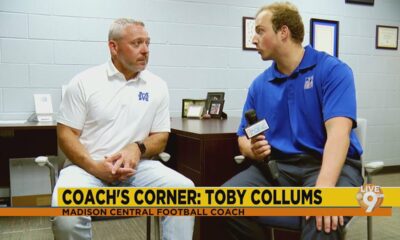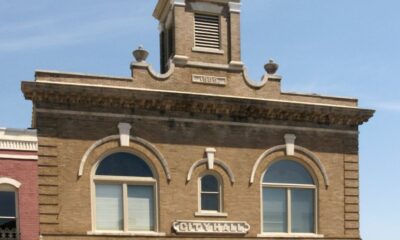Mississippi Today
UMMC document shows plan to correct burn center deficiencies

The University of Mississippi Medical Center, approved in April to host the state's next burn center, didn't fully meet almost a third of the required criteria.
However, an expert said that wasn't uncommon, and UMMC filed a corrective action plan following the visit which lists steps UMMC will take in the following months to get up to speed.
Since Mississippi's only burn center closed in October, both UMMC and Mississippi Baptist Medical Center have submitted applications to become the next burn center's host. The state Health Department was given $4 million by the Legislature this year to choose the home of the next burn center, though nothing prevents the money from going to more than one hospital.
Baptist received its site visit from the Health Department on July 18. The results from that site visit have not yet been released.
A March inspection of UMMC showed that in 46 of 155 categories, the health system did not meet or only “partially met” the requirements for a burn center.
The corrective action plan shows remedial steps for 44 of those 46 deficiencies.
UMMC spokesperson Patrice Guilfoyle declined to comment on any of Mississippi Today's questions, including about improvements the health system has made since the site survey.
The site survey pointed out that UMMC had no internal burn education plan, did not have sufficient staff and was missing some policies and procedures.
According to the corrective action plan, the health system will develop its internal burn education plan by the end of the year and staff will have been trained in it by March 2024.
The health system plans to recruit staff — including a dietitian, psychiatrist, outreach coordinator and pharmacist — and develop the policies it's still missing by the same deadline.
Corrective actions for two of the “partially met” requirements, though, are missing from the report.
Mississippi State Department of Health employees directed Mississippi Today to UMMC for an explanation but confirmed the entire report was released. Guilfoyle, the spokesperson for UMMC, also declined to answer that specific question.
Previously, the site survey found that UMMC's policies and procedures for the use of allograft tissues were being updated, and therefore, the health system only “partially met” that requirement. Additionally, UMMC was still recruiting staff for a rehabilitation program for its burn patients. Neither criteria were mentioned in the corrective action plan.
At the time of the site survey report, Dr. Peter Arnold, director of the burn center, was not current in Advanced Burn Life Support (ABLS), the standard training for burn patient providers. Though he was scheduled to undergo this training in April, Arnold's deadline for completing the training in the plan is the end of this month.
While the health system's initial burn center application showed that none of its staffers were ABLS trained, a Facebook post from May showed that 48 people had undergone ABLS training. The corrective action plan notes that “hospital administration revealed a very robust plan for ABLS.” By the end of the year, attending staff will be trained in ABLS, the plan says.
UMMC is also remodeling a dedicated operating room space, which will be available by next March, the plan says. The Institutions of Higher Learning recently approved UMMC's request to use $4 million of its own money to renovate its facilities to create a new burn center.
This article first appeared on Mississippi Today and is republished here under a Creative Commons license.
Mississippi Today
On this day in 1892
MAY 21, 1892

Crusading journalist Ida B. Wells published a column exposing the lynchings of African-American men and denouncing claims that the lynchings were meant to protect white women.
Her anti-lynching campaign came after a mob killed three of her friends, who had reportedly opened a grocery store that competed with a white-owned store in Memphis.
Upset by Wells' writings, a white mob destroyed her presses and threatened to kill her if she ever published again. She left Memphis for Chicago, but she continued to expose lynchings, calling for national legislation to make lynching a crime.
In 1898, she took her protest to the White House.
“Nowhere in the civilized world save the United States of America do men, possessing all civil and political power, go out in bands of 50 and 5,000 to hunt down, shoot, hang or burn to death a single individual, unarmed and absolutely powerless,” she wrote. “We refuse to believe this country, so powerful to defend its citizens abroad, is unable to protect its citizens at home.”
The National Memorial for Peace and Justice in Montgomery, which opened in 2018, features a reflection space in honor of her.
Congress finally passed an anti-lyncing law in the 2021-22 session. The Emmett Till Antilynching Act defines lynching as a federal hate crime.
This article first appeared on Mississippi Today and is republished here under a Creative Commons license.
Mississippi Today
On this day in 1961
MAY 20, 1961

A white mob of more than 300, including Klansmen, attacked Freedom Riders at the Greyhound Bus Station in Montgomery, Alabama. Future Congressman John Lewis was among them.
“An angry mob came out of nowhere, hundreds of people, with bricks and balls, chains,” Lewis recalled.
After beating on the riders, the mob turned on reporters and then Justice Department official John Seigenthaler, who was beaten unconscious and left in the street after helping two riders.
“Then they turned on my colleagues and started beating us and beat us so severely, we were left bloodied and unconscious in the streets of Montgomery,” Lewis recalled.
As the mob headed his way, Freedom Rider James Zwerg said he asked for God to be with him, and “I felt absolutely surrounded by love. I knew that whether I lived or died, I was going to be OK.”
The mob beat him so badly that his suit was soaked in blood.
“There was nothing particularly heroic in what I did,” he said. “If you want to talk about heroism, consider the Black man who probably saved my life. This man in coveralls, just off of work, happened to walk by as my beating was going on and said ‘Stop beating that kid. If you want to beat someone, beat me.' And they did. He was still unconscious when I left the hospital.”
To quell the violence, Attorney General Robert Kennedy sent in 450 federal marshals.
This article first appeared on Mississippi Today and is republished here under a Creative Commons license.
Mississippi Today
Podcast: The controversial day that Robert Kennedy came to the University of Mississippi
Retired U.S. Bankruptcy Judge Edward Ellington talks with Mississippi Today's Bobby Harrison and Geoff Pender about former U.S. Attorney General Robert Kennedy's speech at the University of Mississippi less than four years after the riots that occurred after the integration of the school. Ellington, who at the time headed the Ole Miss Speaker's Bureau as a law school student, recalls the controversy leading up to the speech.
This article first appeared on Mississippi Today and is republished here under a Creative Commons license.
-
Our Mississippi Home7 days ago
Beat the Heat with Mississippi’s Best Waterparks
-
SuperTalk FM4 days ago
State auditor cracking down on Mississippians receiving unemployment benefits
-
Mississippi News Video6 days ago
Jackson has a gang problem
-
Local News4 days ago
Family files lawsuit after teen’s suicide in Harrison County Jail
-
Mississippi Today5 days ago
On this day in 1950
-
228Sports7 days ago
George County Pours Runs In 6A South State Title Victory At PRC
-
Local News Video6 days ago
In the Kitchen with J's Restaurant
-
Mississippi Business4 days ago
Connor Industries locating operations in Coahoma County











































